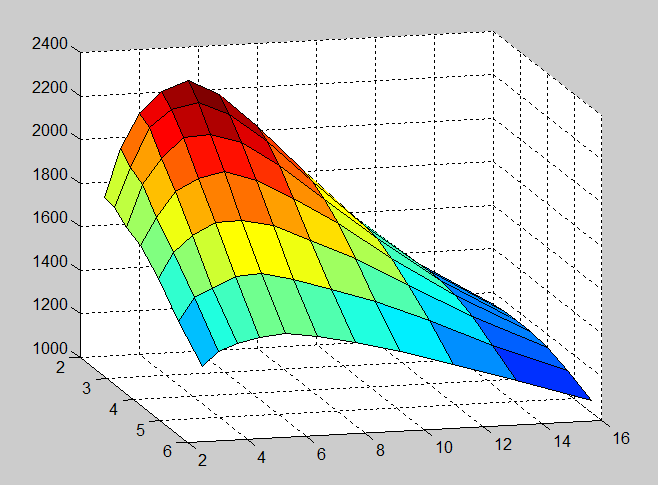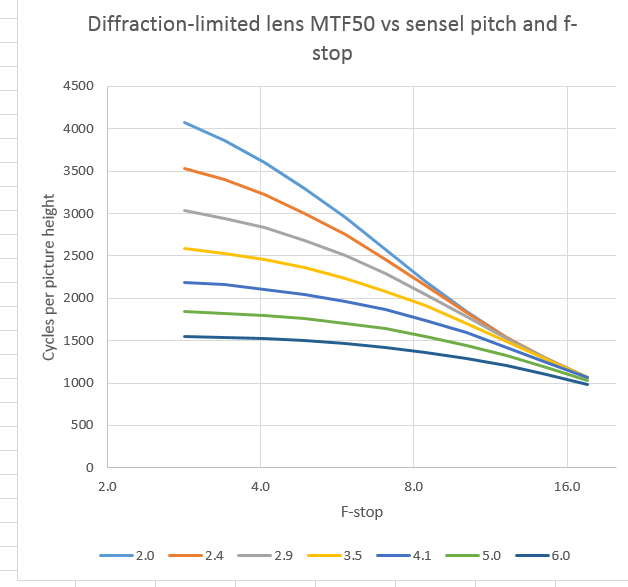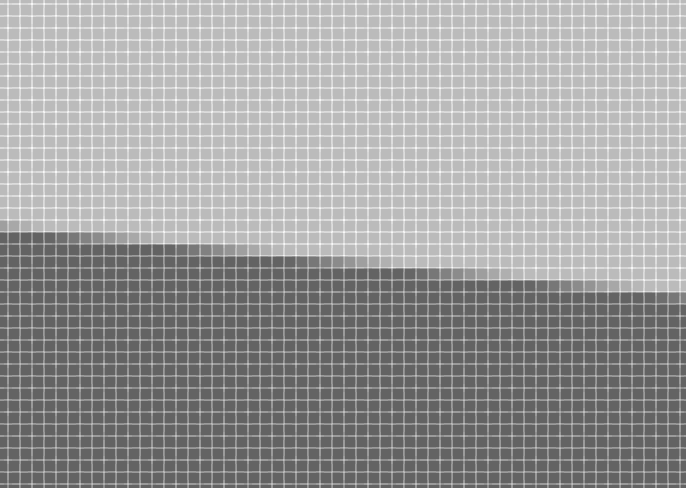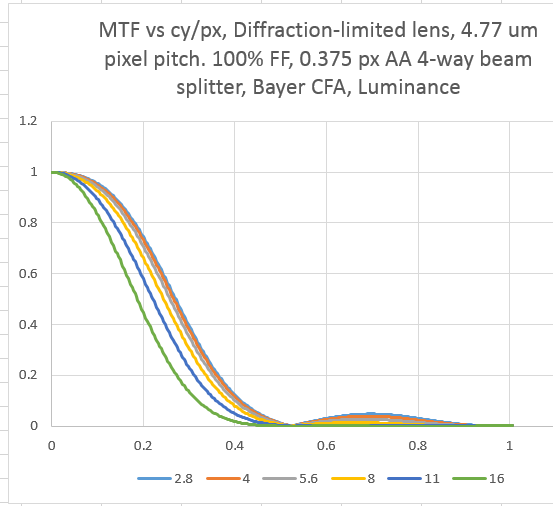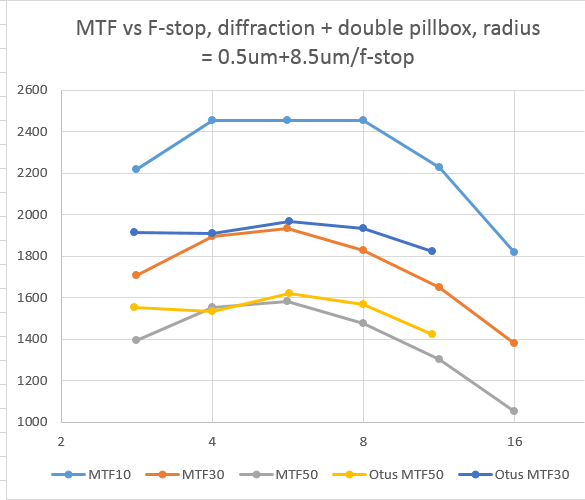I ran the curves from yesterday’s post for the simulated Zeiss Otus 55mm f/1.4 lens. MTF50, cycles/picture height, in three dimensions with no AA filter: In two dimensions, with f-stop as the horizontal axis: You can see that there is not much improvement as we go from a pitch of 2.4 um to one of… [Read More]
Archives for 2014
MTF50 vs f-stop and pixel pitch
Now that I’ve got a fair amount of confidence in the MTF analysis, I went back to the model of the diffraction-limited lens, and ran a set of simulations at various f-stops and sensel pitches. Here’s a 3D look at the results, with MTF50 cycles/picture height the vertical axis, sensel pitch in um coming towards… [Read More]
MTF simulation: under the covers
Yesterday I went back and looked at some of the simulation results, and grew suspicious that there were problems with the way the simulated camera was sampling the simulated target. As I dug deeper, I started to question some of my original assumptions, and started experimenting with changes. What I ended up with is close… [Read More]
Simulating a Lithium Niobate AA filter
In a comment to a recent post, Jack Hogan posted this link. It’s well worth reading. In it you’ll find Frans van den Bergh’s explanation of how a 4-way Lithium Niobate beam-splitting anti-aliasing (AA) filter works, and what convolution kernel simulates one that has 0.375 pixel shifts. I added that kind of AA filter to the… [Read More]
Modeling the MTF of a perfect camera and real lens
In the last post I showed MTF results from a simulation of a Bayer-CFA camera with a diffraction-limited lens. The camera had a 4.77 micrometer (um) pixel pitch. I had previously done an MTF analysis of the Zeiss Otus 55mm f/1.4 lens on a Sony alpha 7R, a camera with that pixel pitch. I thought… [Read More]
- « Previous Page
- 1
- …
- 35
- 36
- 37
- 38
- 39
- …
- 62
- Next Page »
